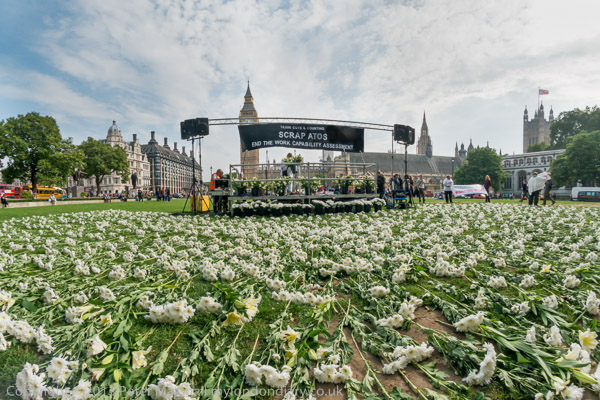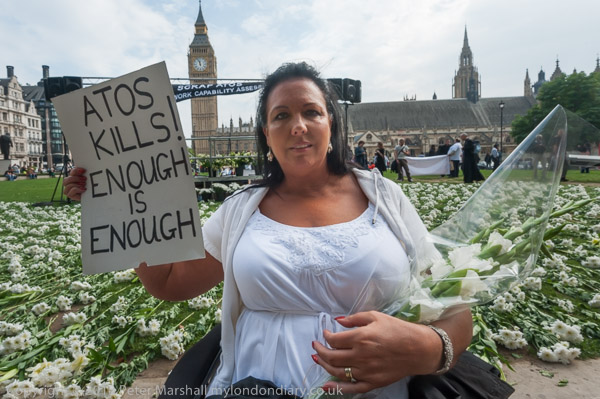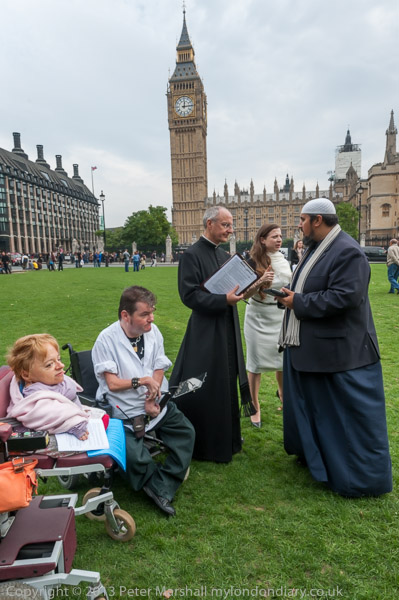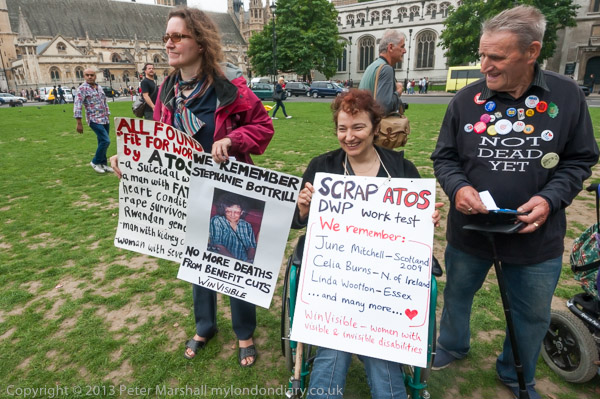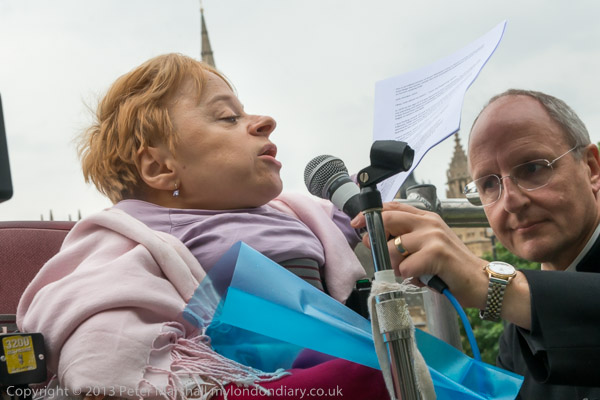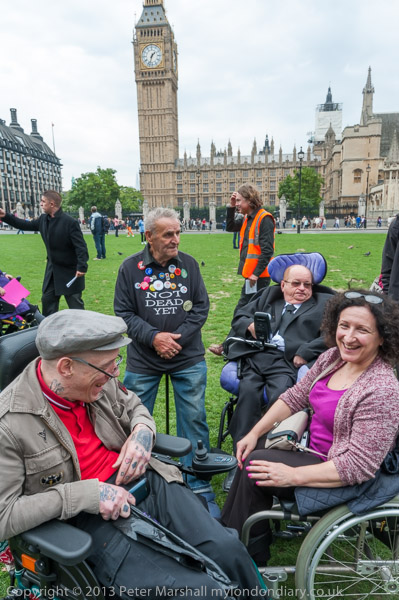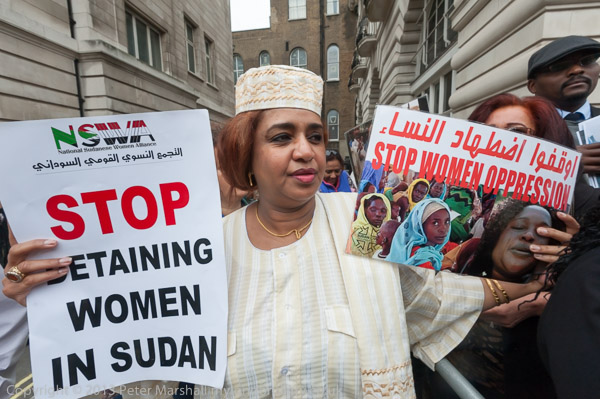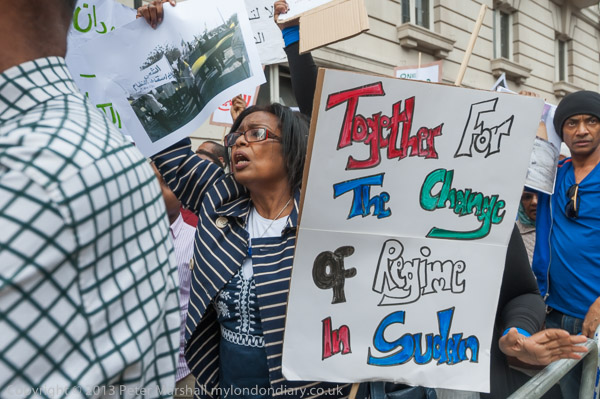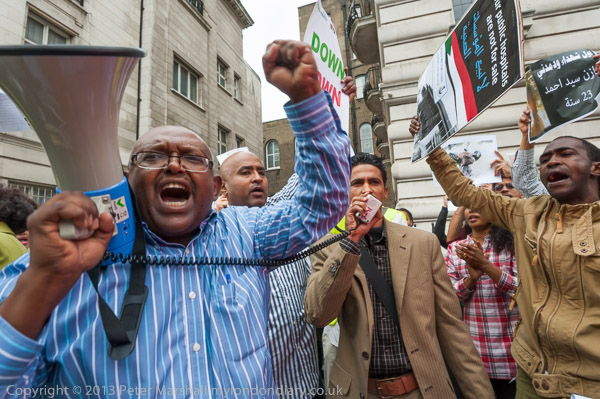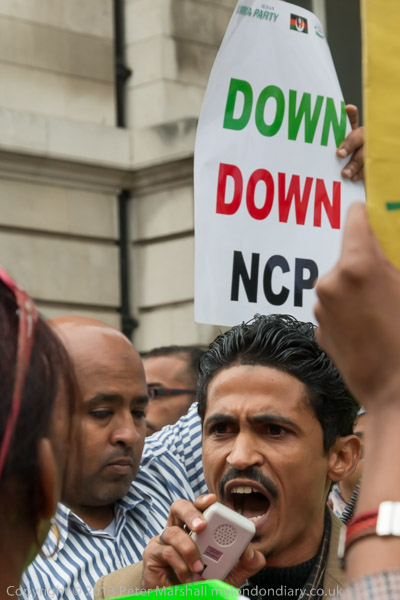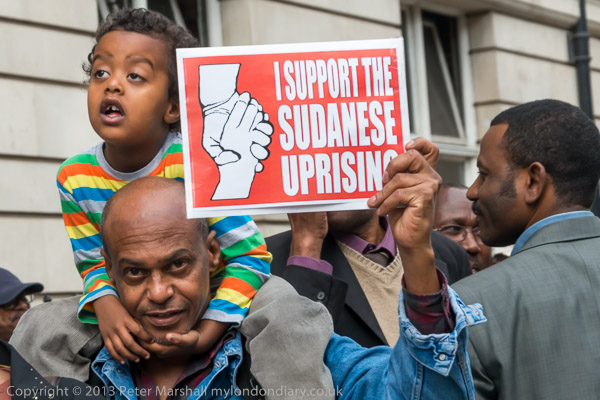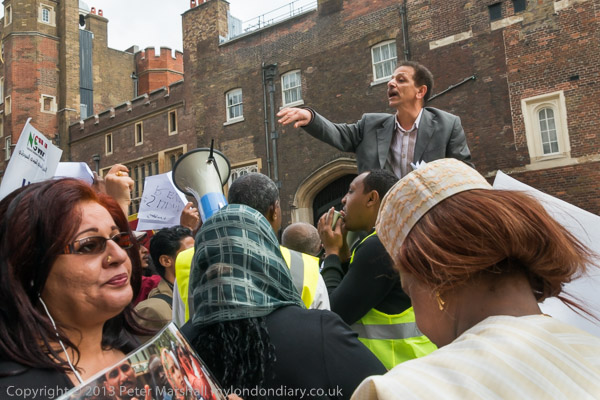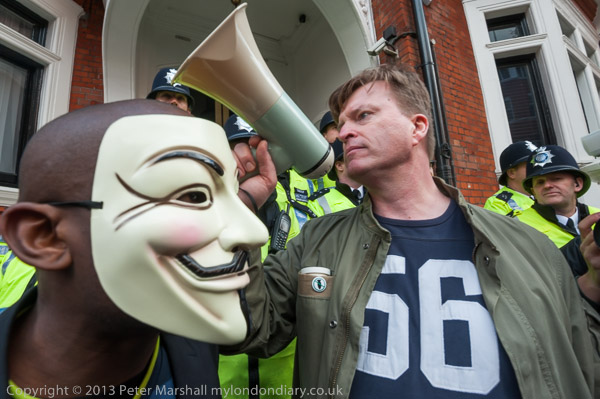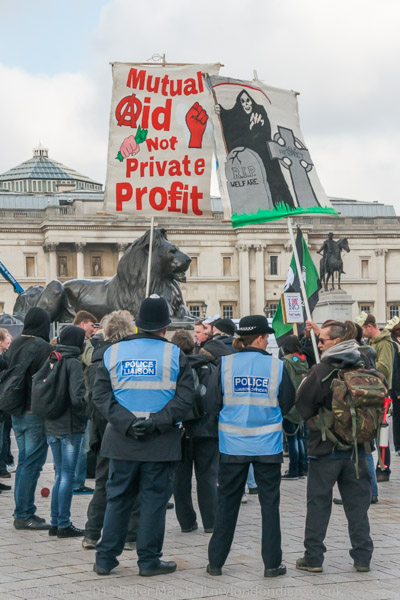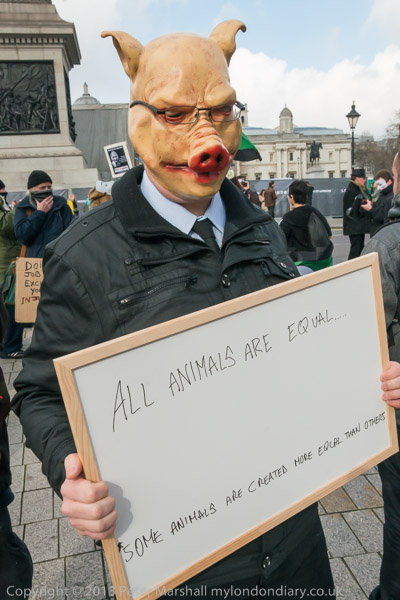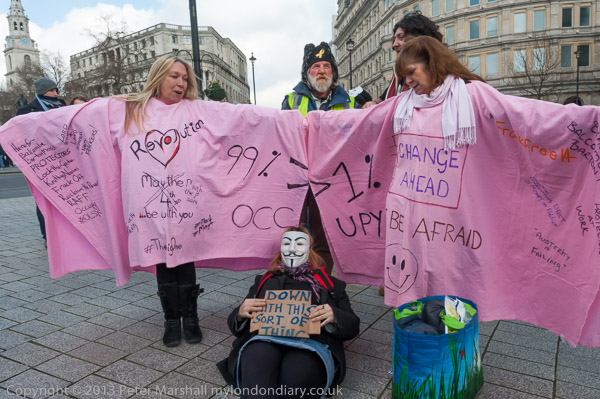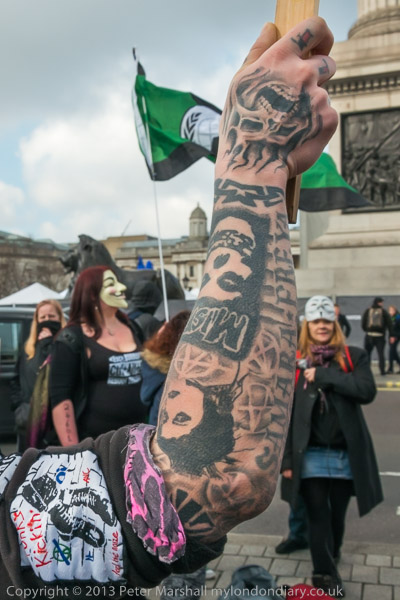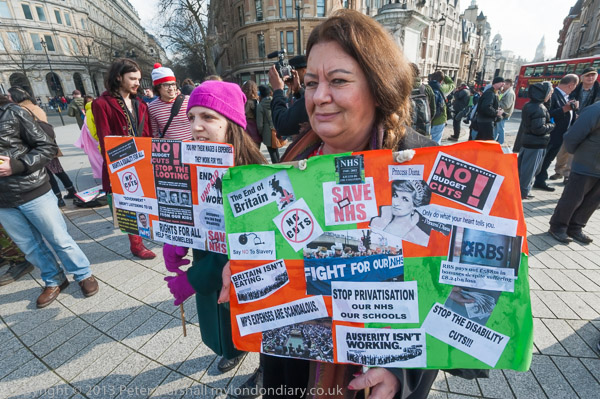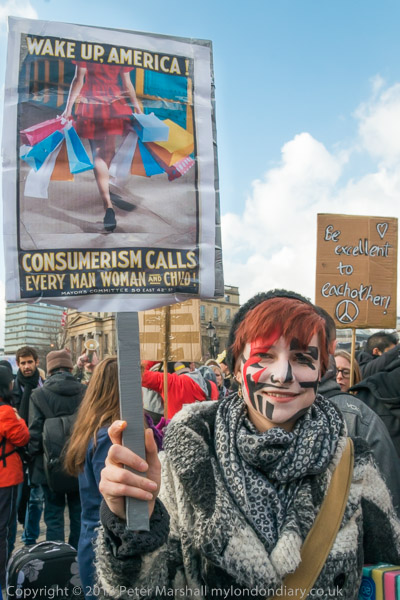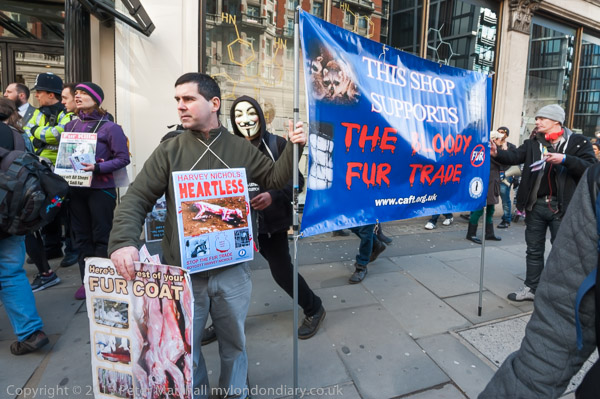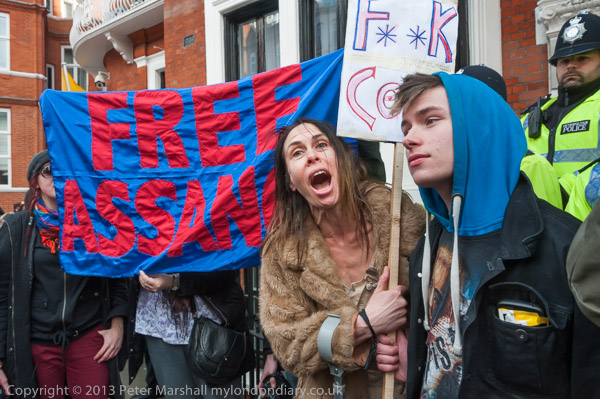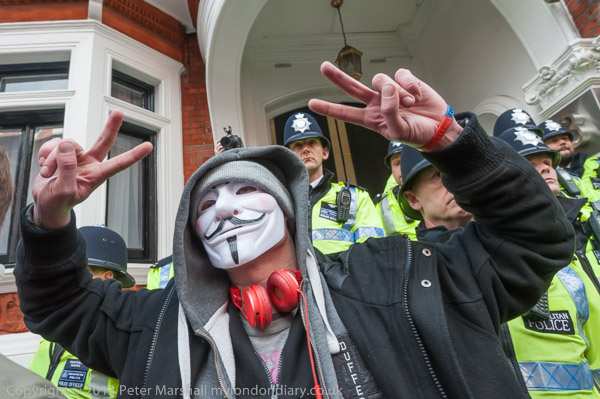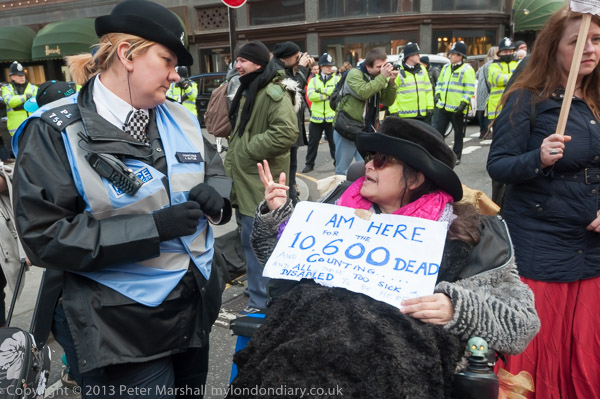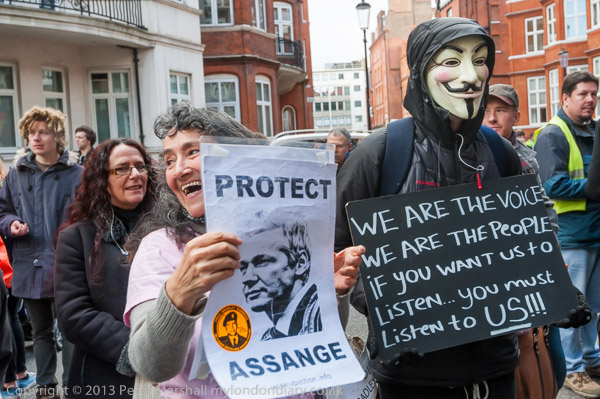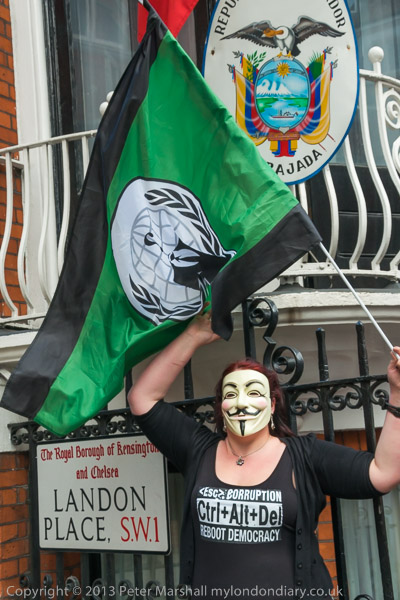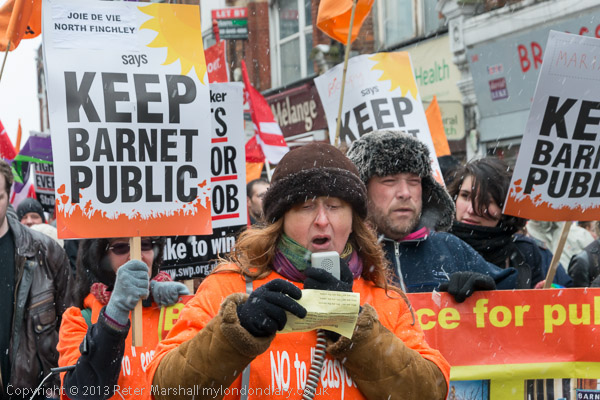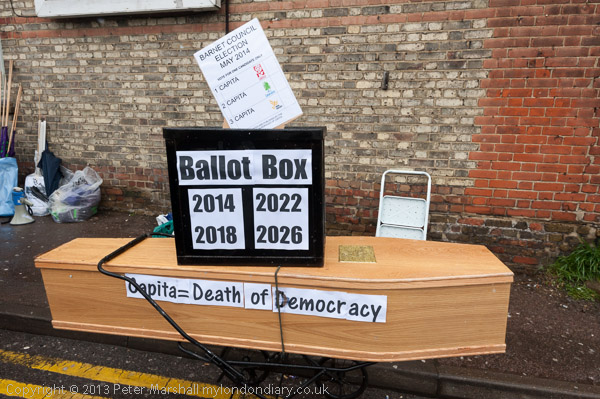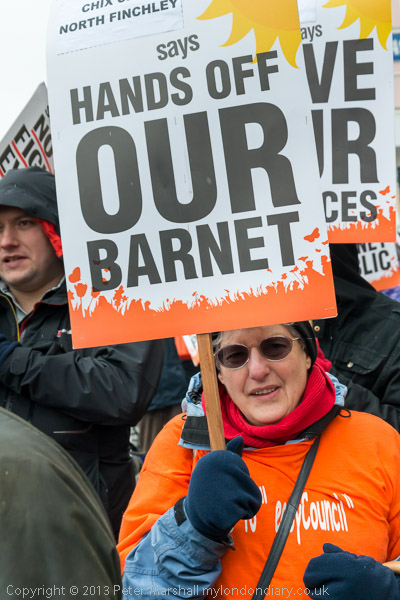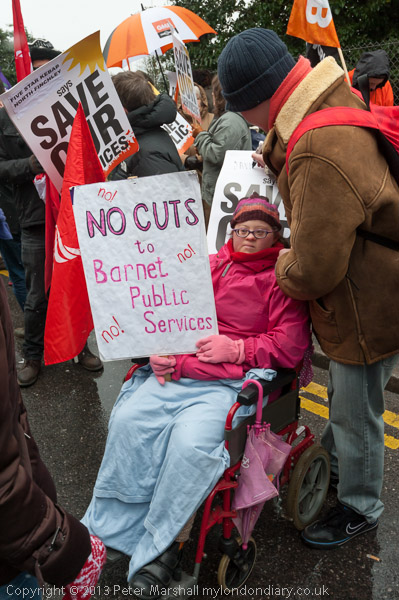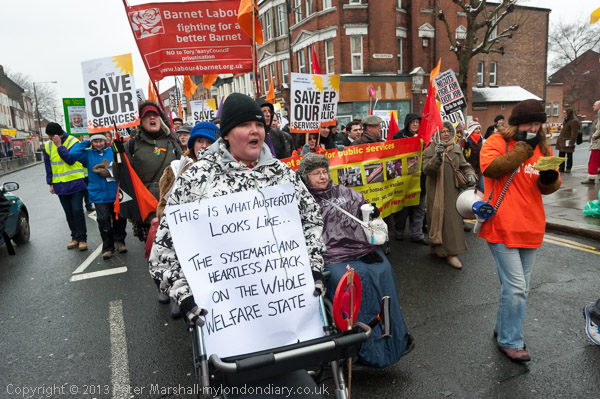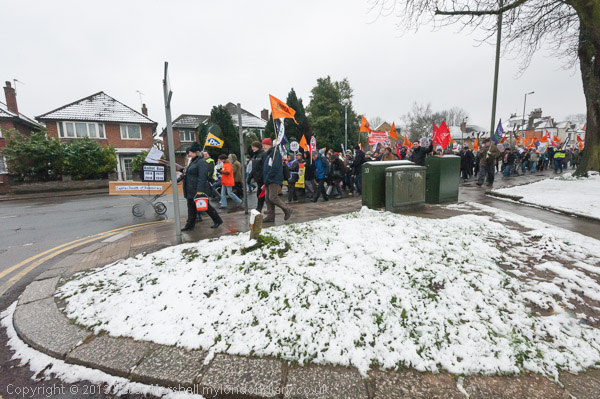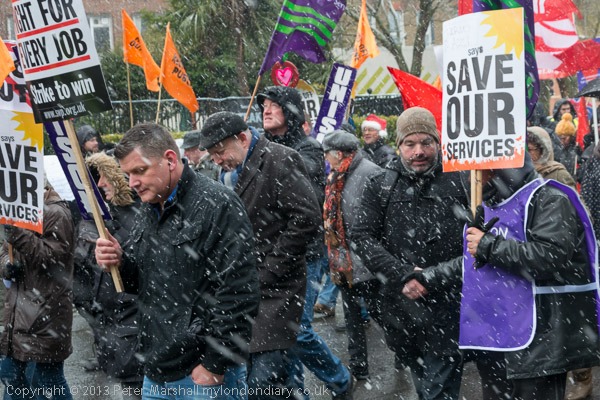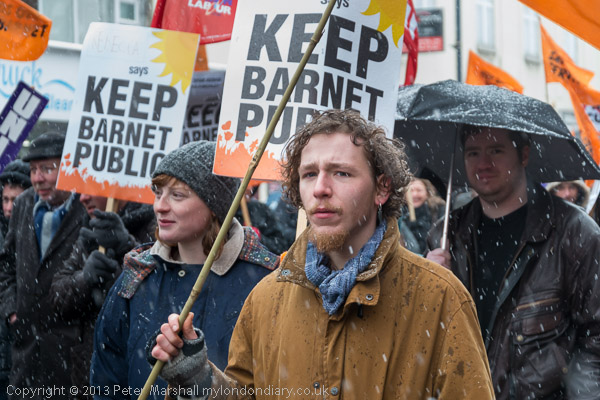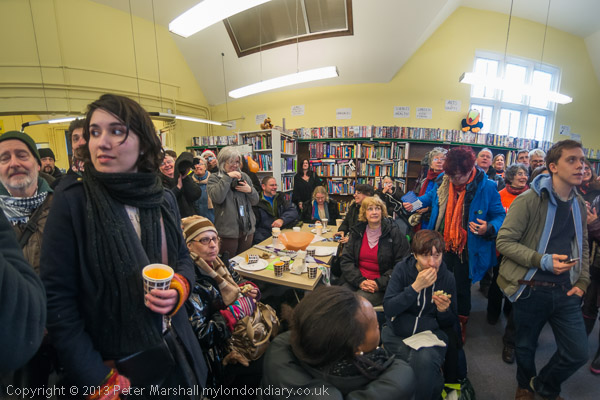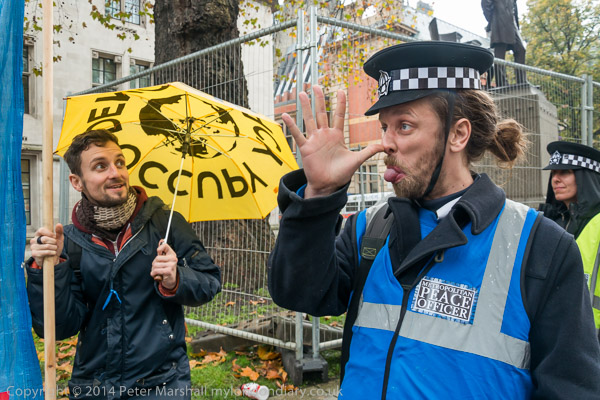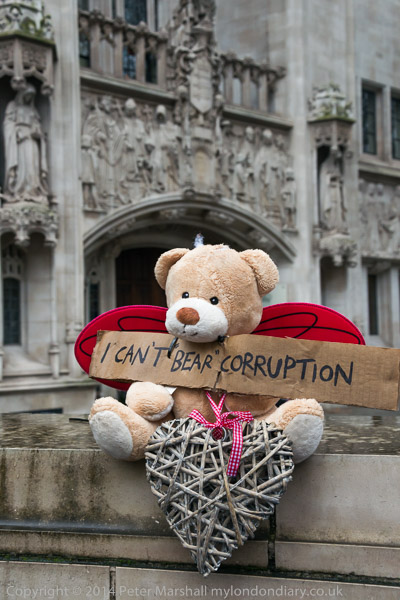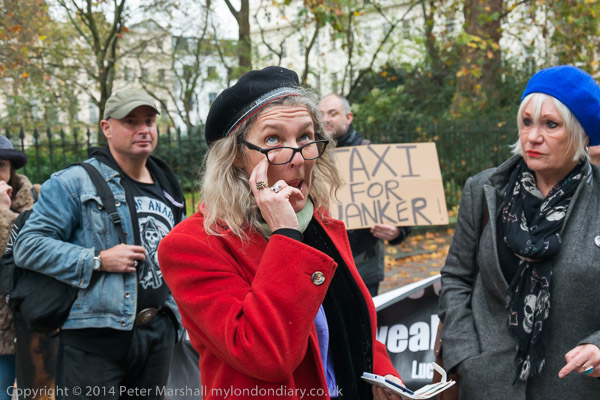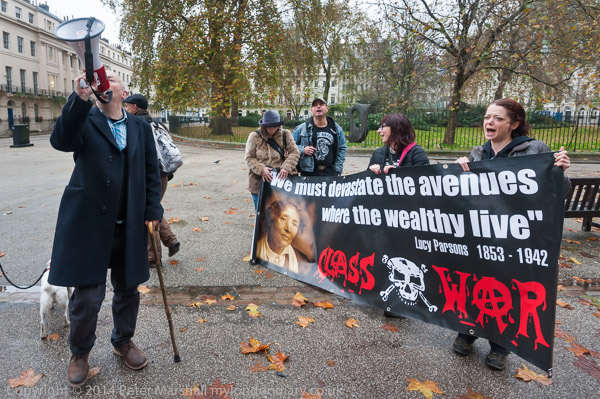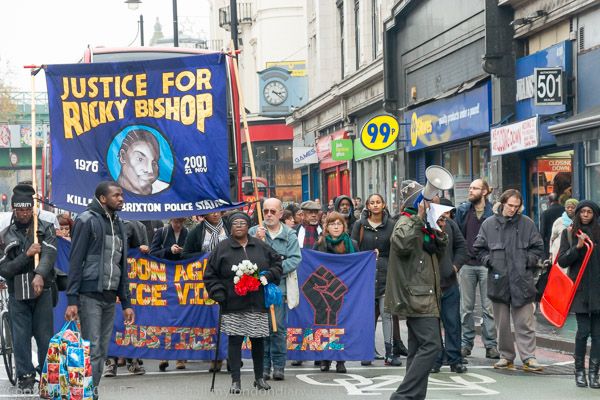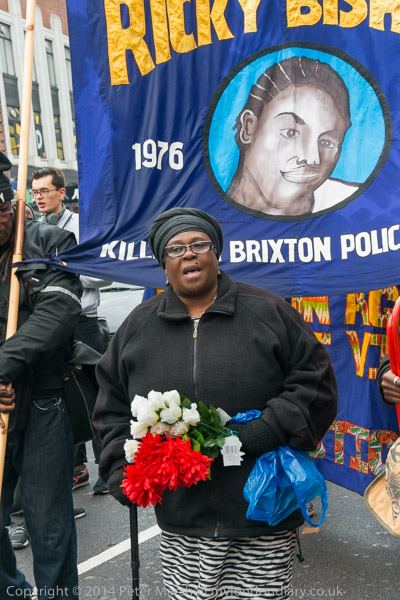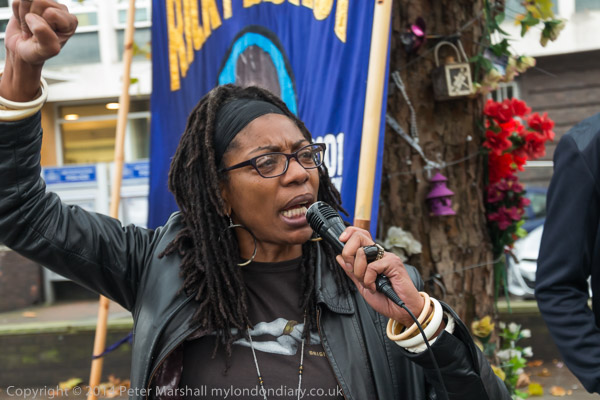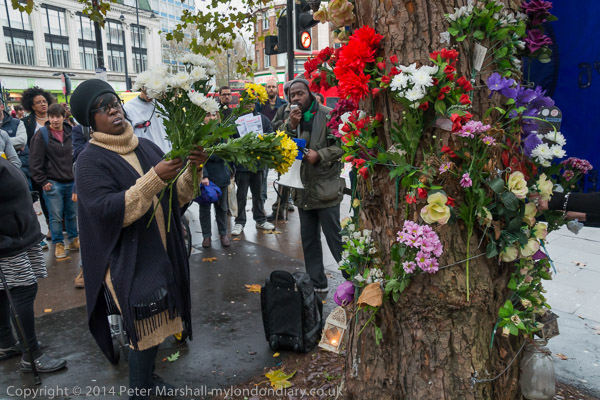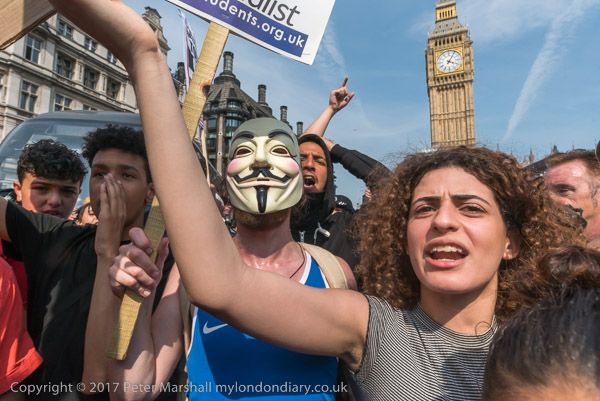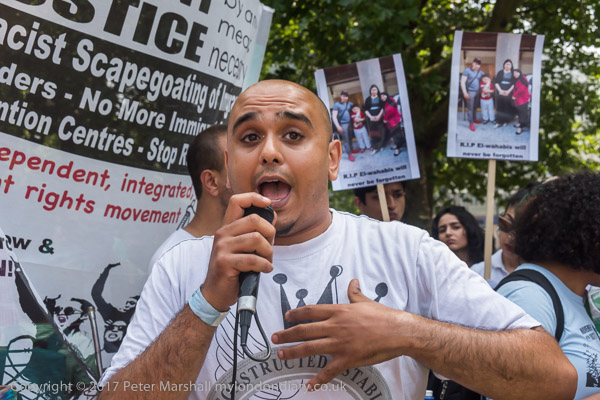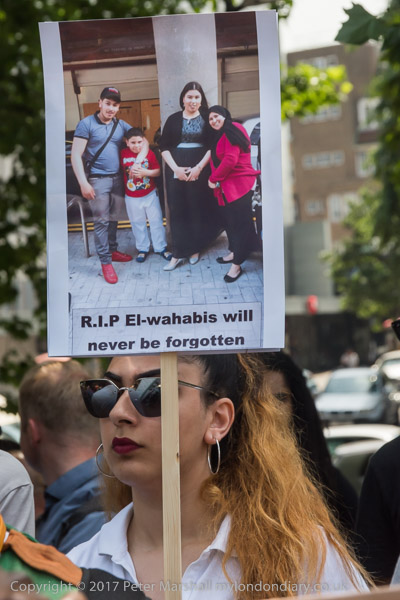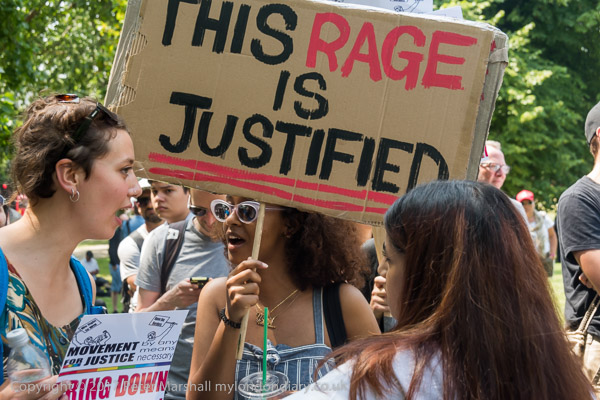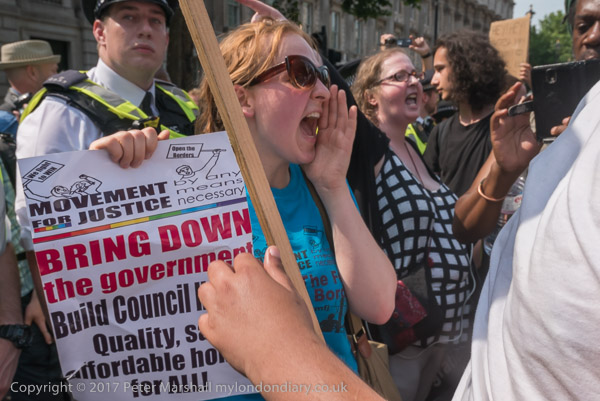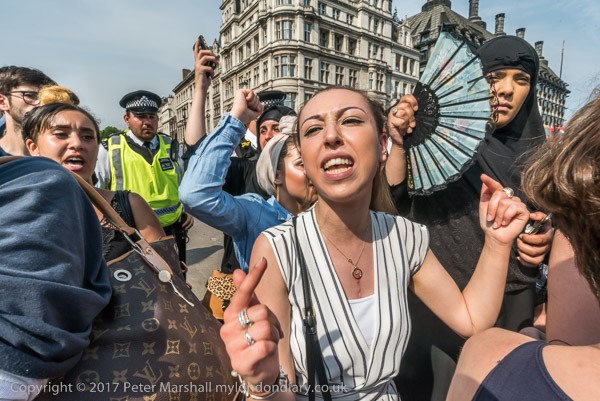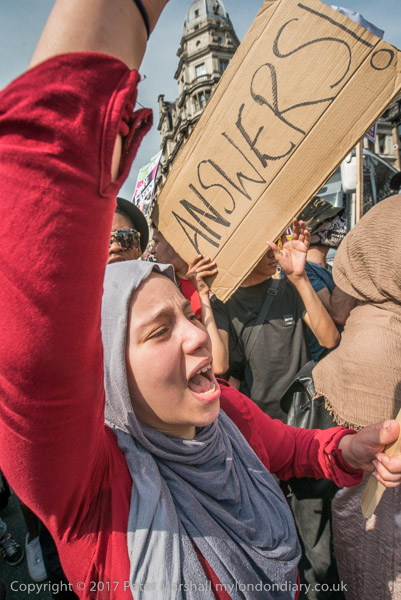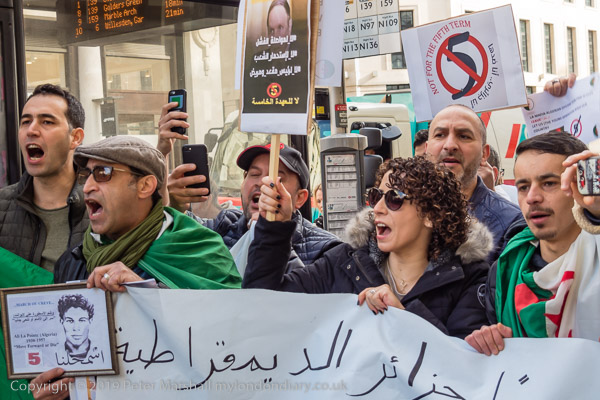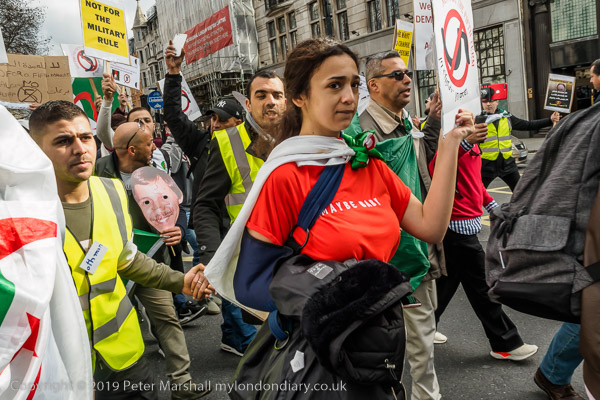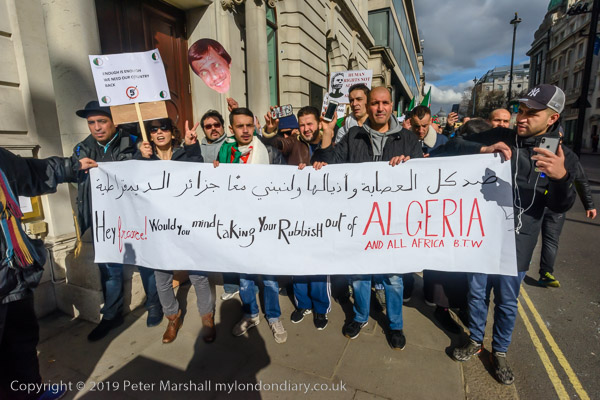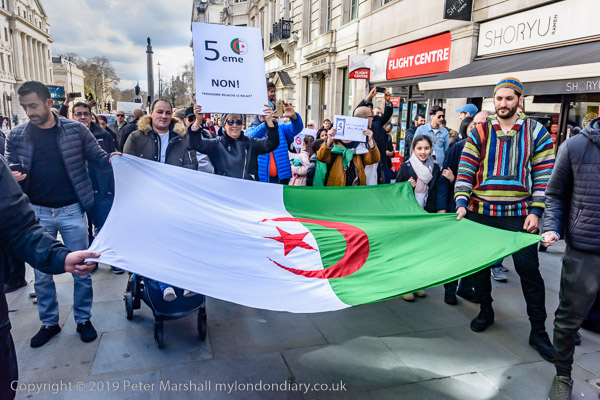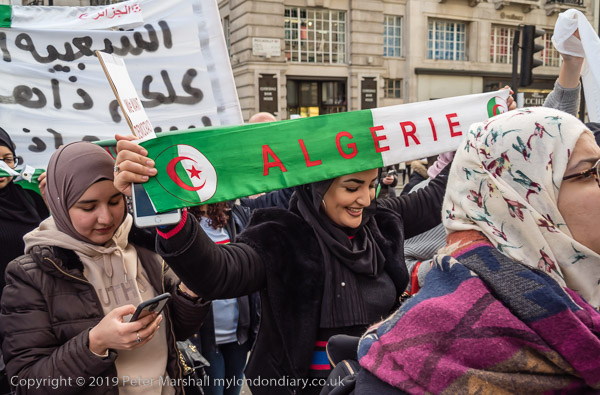Goodbye and Good Riddance – April 2023: Continuing from yesterday’s post some more pictures from 2013, from my albums on Facebook from April 2003.
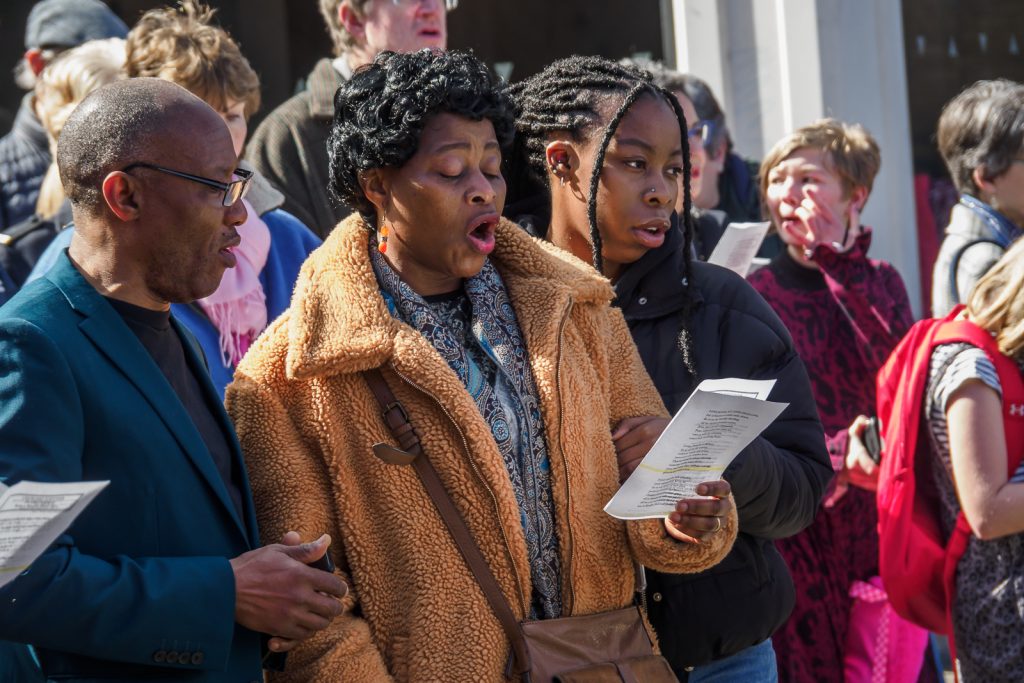
Christians in Staines, as in many other towns and cities across the UK, take part in a Good Friday procession of witness through the town centre. Led by a man carrying a large wooden cross and the Staines Salvation Army Band people from churches in Staines, Ashford and Laleham walked past shops and market stalls to an outdoor service in the Two Rivers Shopping Centre with hymns, prayers, religious songs and a short address. Peter Marshall
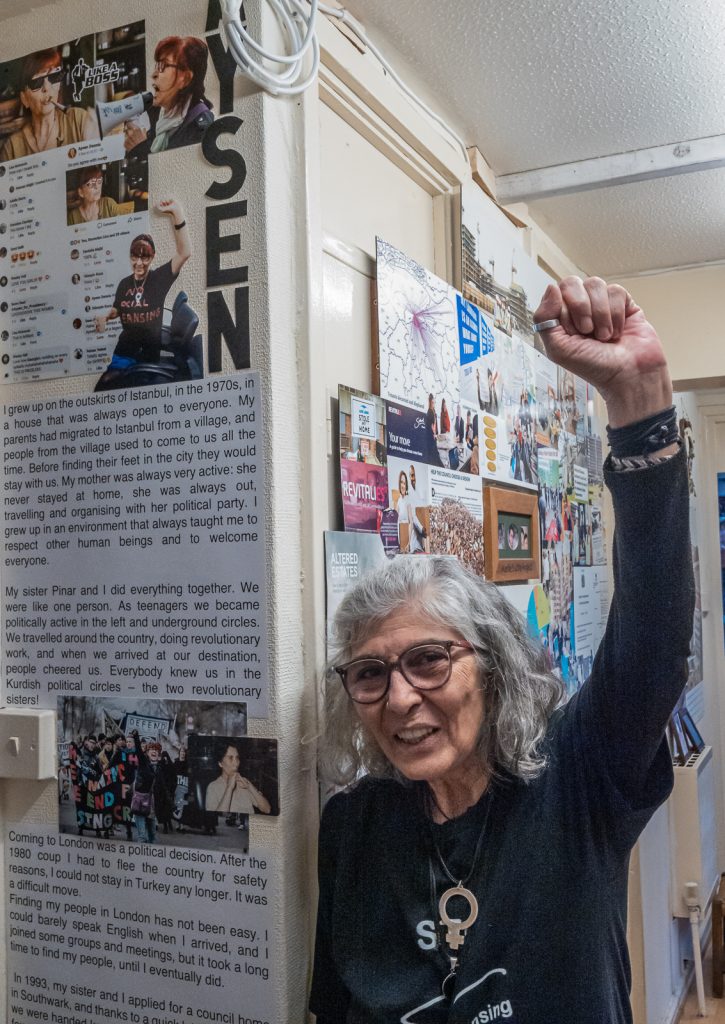
An exhbition in Aysen’s council flat on the Aylesbury Estate in Southwark to celebrate 20+ years of housing struggles for housing justice and against gentrification, social cleansing and demolition of social housing. Her flat has been transformed into a living exhibition with flyers, posters, video, audio and installations on housing struggles. Peter Marshall
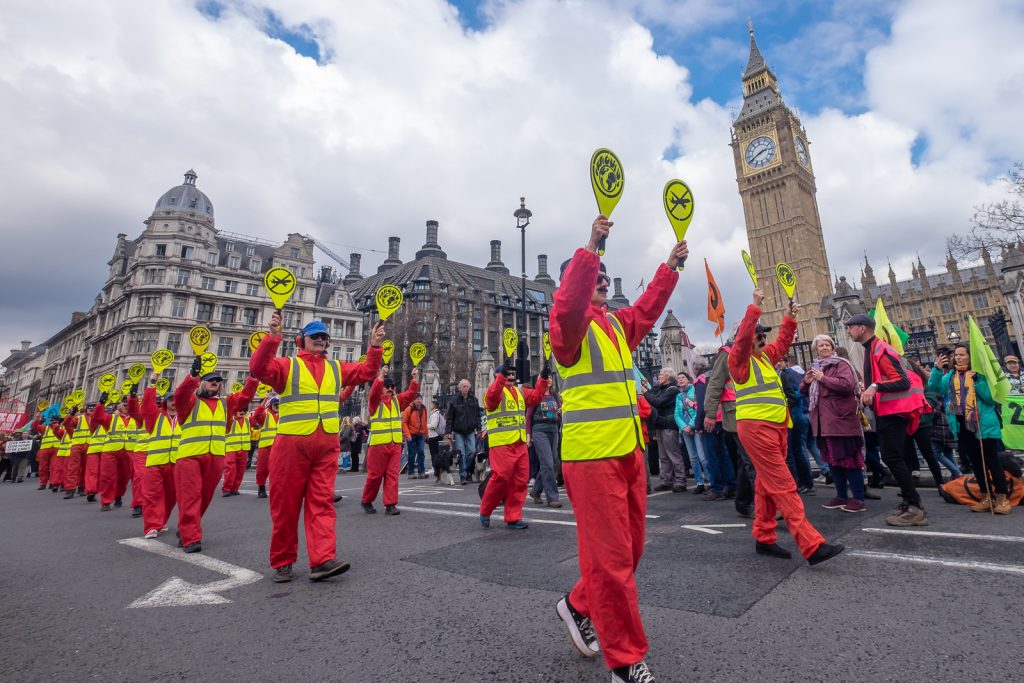
On the first day of Extinction Rebellion’s ‘The Big One’ people march past Parliament calling for an end to airport expansion. Air travel is hugely polluting and expansion would make it impossible to meet the targets needed to prevent disastrous global warming and climate change. Peter Marshall
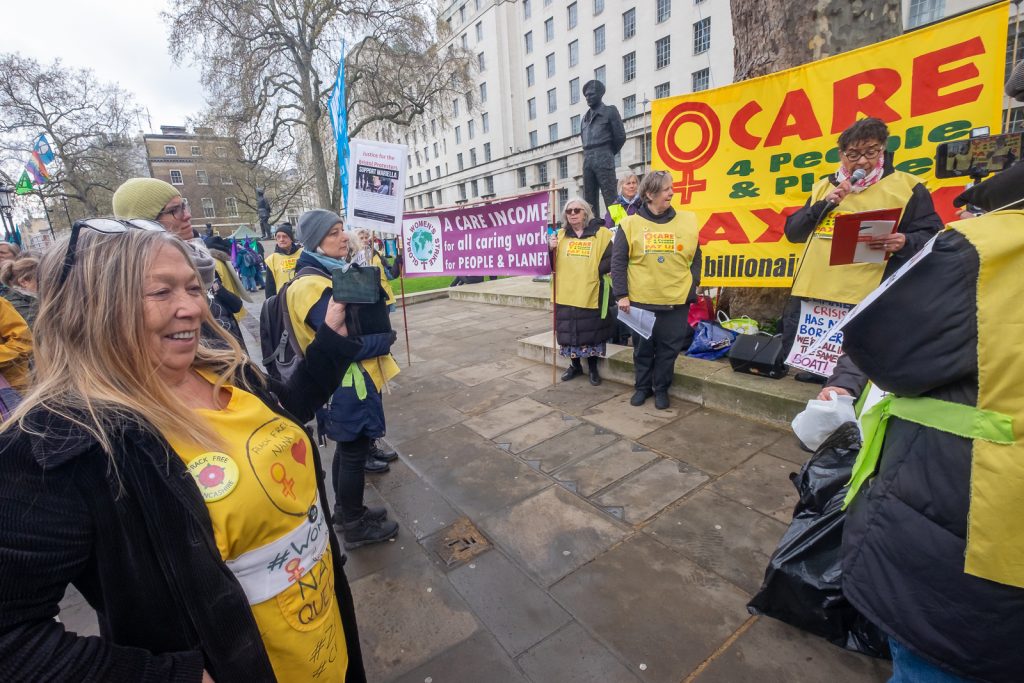
On the first day of Extinction Rebellion’s ‘The Big One’, women hold an open speakout opposite Downing St with the banner ‘Care 4 People & Planet – Pay US NOT billionaire polluters”. Women are being targeted by government cuts in mothers and disabled benefits to force them back into employment while they support fossil fuel polluters and other destructive industries. Young people and women have been at the forefront of the movement for climate justice around the world. Peter Marshall
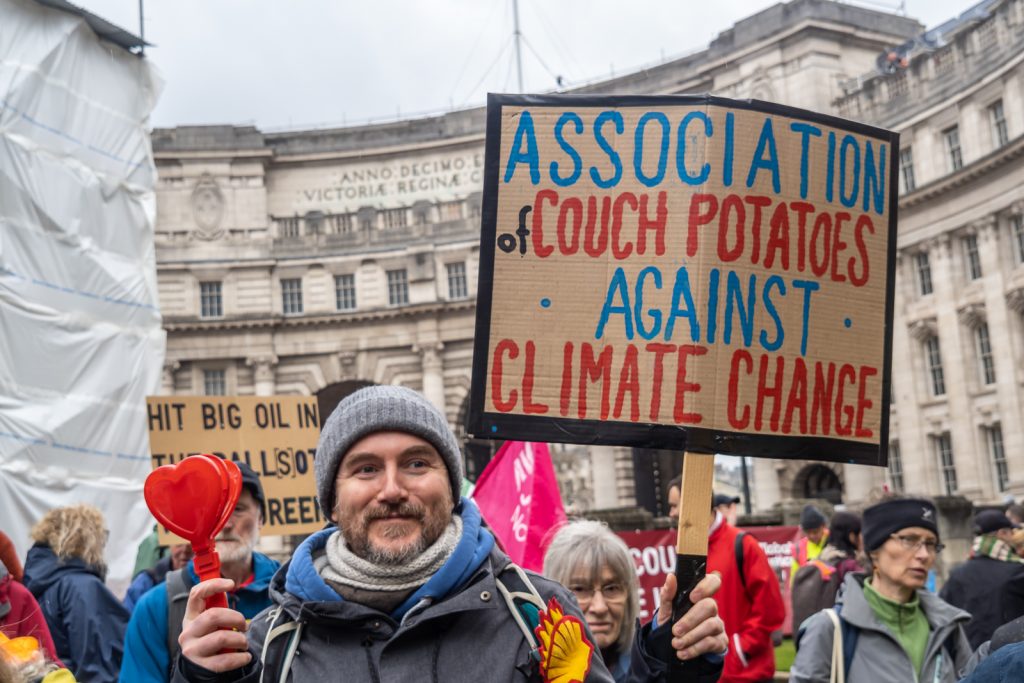
On the first day of Extinction Rebellion’s ‘The Big One’ people picketed at a number of short protests outside government ministries and other government buildings in central Westminster. Peter Marshall
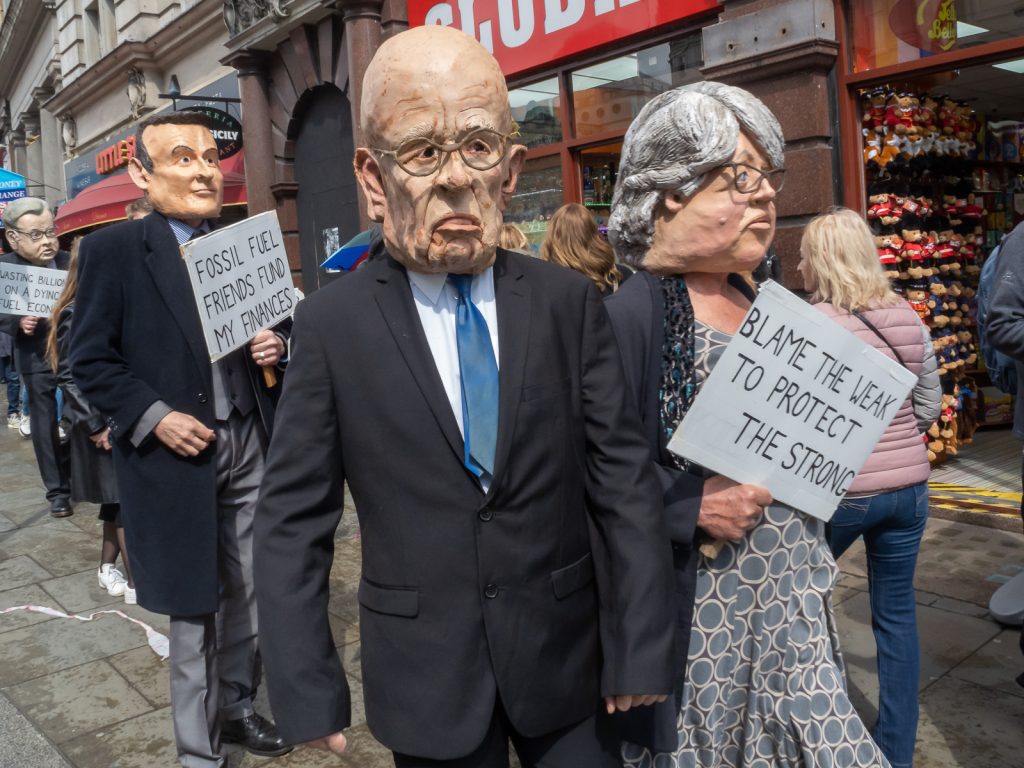
Many thousands came to Westminster to take part in the first of 4 days of Extinction Rebellion’s protest demanding the government reverse policies that are fuelling climate change with new coal mines and oil fields and encouraging aviation. The protesters say their corruption has wrecked the economy, education system and our NHS, increased fuel costs and cut living standards while they blame poor families, people of colour, and new immigrants. Peter Marshall
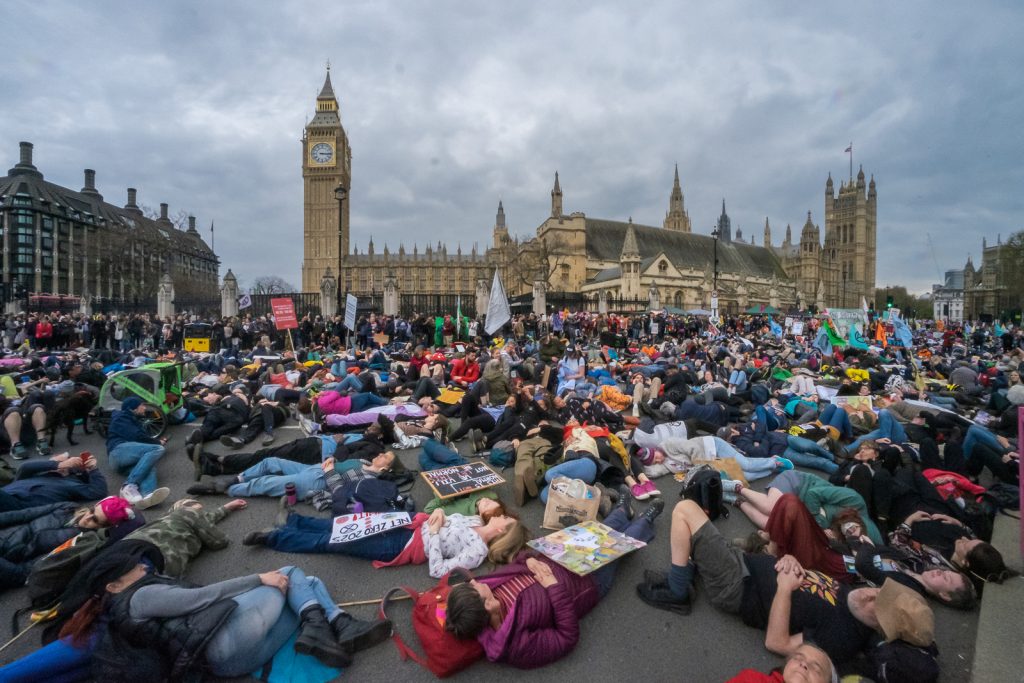
Many thousands of Extinction Rebellion supporters march from a rally outside Westminster Abbey on Earth Day to honour and respect the natural world and all endangered species. Led in blocks by drummers they stopped at several points to play birdsong loudly on all their phones. So many took part that the silent die-in for species lost and under threat planned for Parliament Square spread from Lambeth Bridge to St James’s Park. Peter Marshall
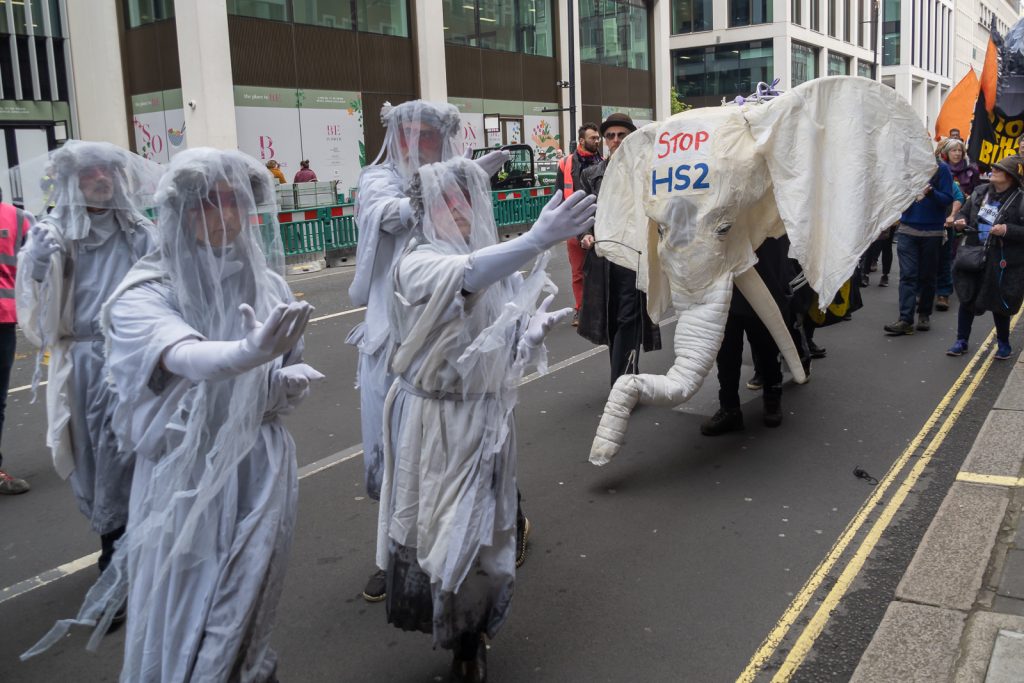
A procession sets off from the Department for Energy Security & Net Zero (DESNZ) to march to DEFRA calling for plans to build more waste incinerators to be dropped and existing ones to be closed down. The call for a massive reduction in waste through reuse, recycling and composting and an end to polluting carbon dioxide producing waste burning. The procession included a Stop HS2 elephant, mimes, drummers and a large model incinerator. Peter Marshall
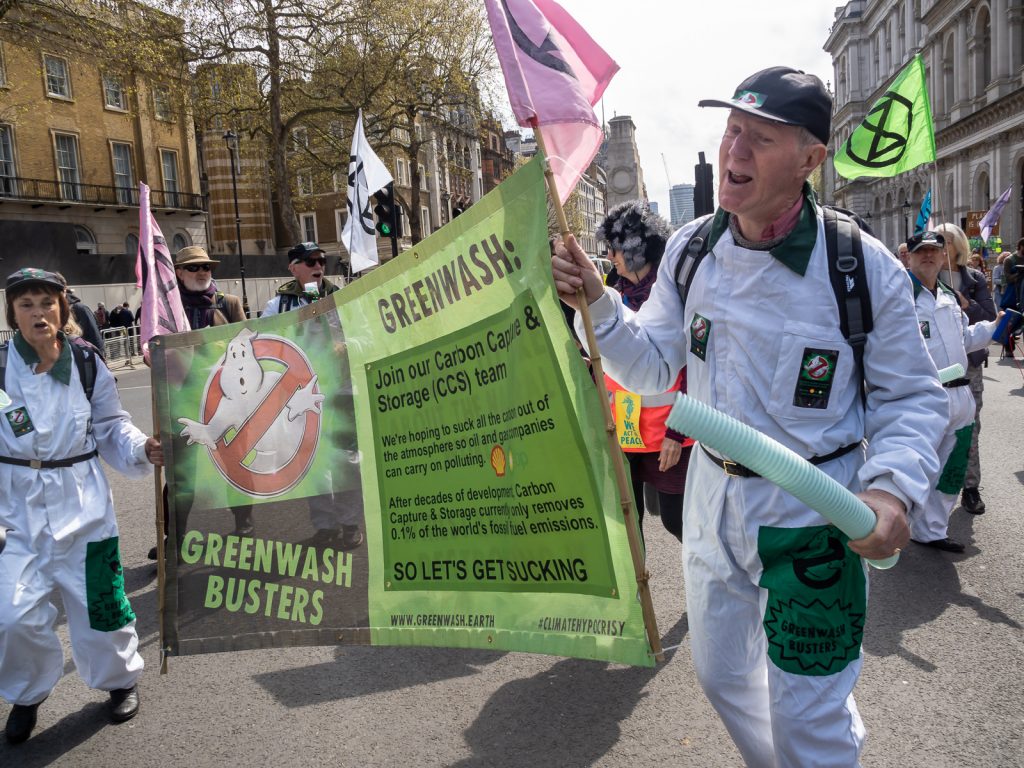
Greenwash Carbon Capture & Storage team. On the final day of XR’s The Big One, several thousands marched from Parliament Square past Downing St and along the Strand, crossing over Waterloo Bridge to end with a protest in front of the Shell Centre. The march demanded no future for fossil fuels. Peter Marshall
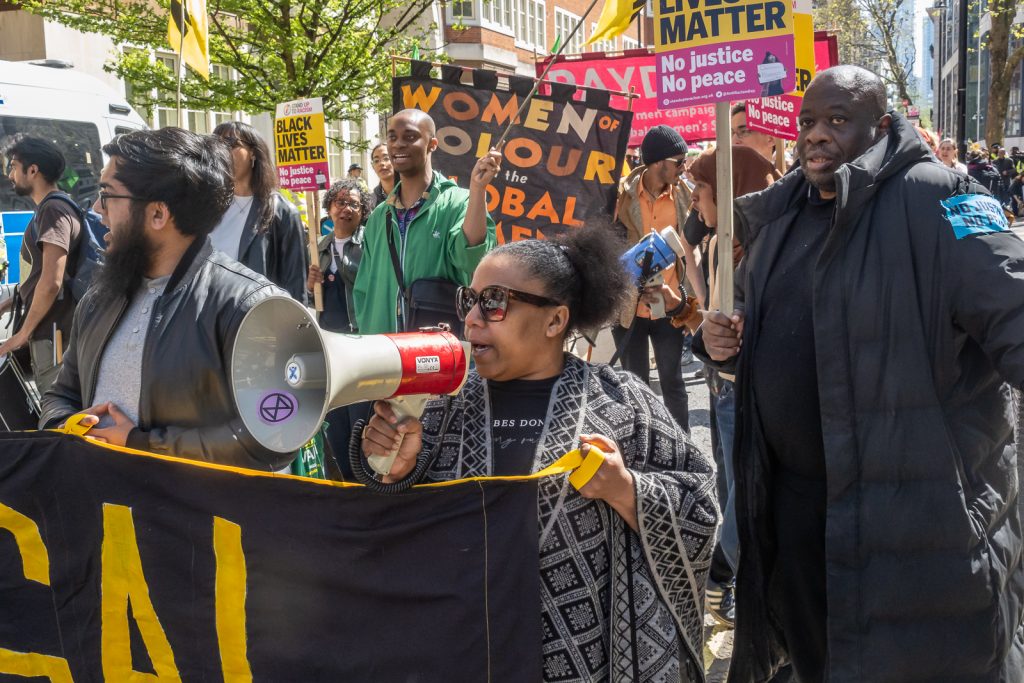
The march begins. Black Lives Matter lead a rally and march from Home Office to Whitehall calling for unity and action against the state racist Borders Act, the anti-democratic Police, Crime, Sentencing and Courts Act and the fascist Public Order Bill. They were joined for the march by Just Stop Oil. Among the speakers were Holly, the partner of Marcus jailed for 2yrs 7months for his protest on the Dartford Crossing, who also sang. Peter Marshall
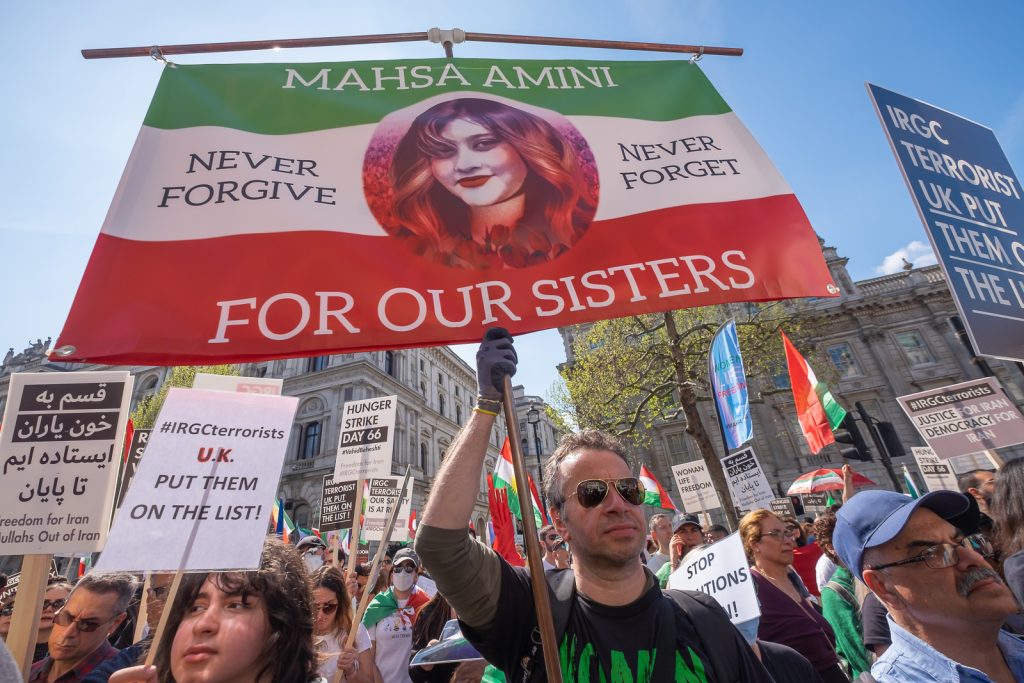
Several thousand Iranians and supporters marched to Whitehall and formed a dense crowd opposite Downing St for a rally in solidarity with protesters in Iran calling for the end of rule by Mullahs. The called for the UK to declare the Iranian Islamic Revolutionary Guard Corps, IRGC a terrorist organisation. Peter Marshall
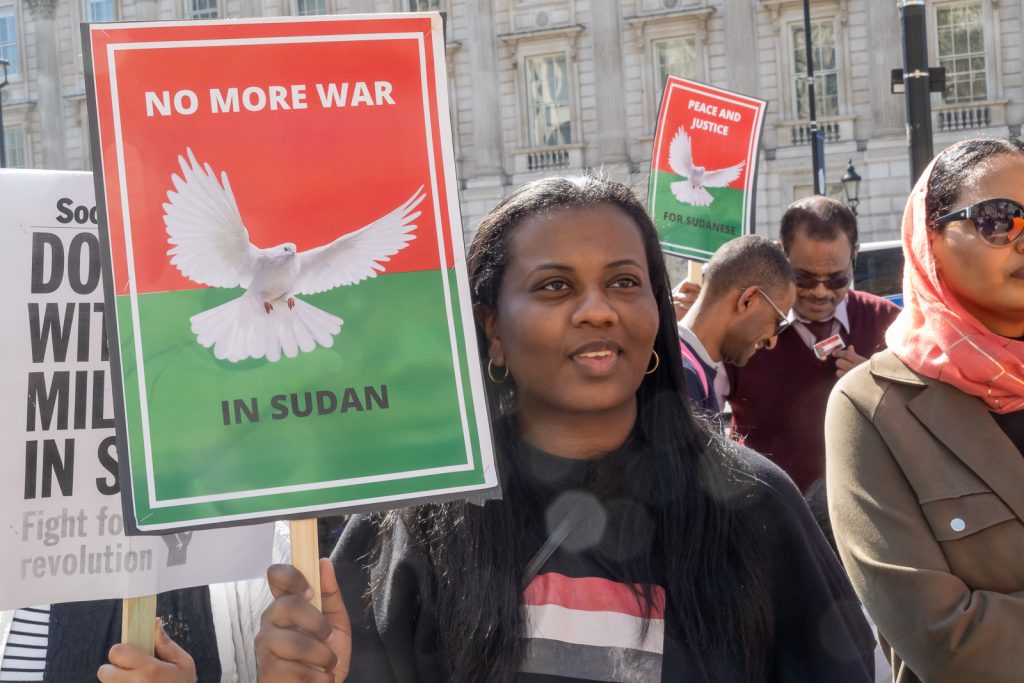
The Sudanese Revolutionary Movement protest opposite Downing St, calls for an end to the war between generals in Khartoum and the genocide in Darfur. The people want peace, democracy and justice in Sudan. Peter Marshall
More pictures from these and other protests in March 2023 in my Facebook Albums.
Flickr – Facebook – My London Diary – Hull Photos – Lea Valley – Paris
London’s Industrial Heritage – London Photos
All photographs on this page are copyright © Peter Marshall.
Contact me to buy prints or licence to reproduce.
